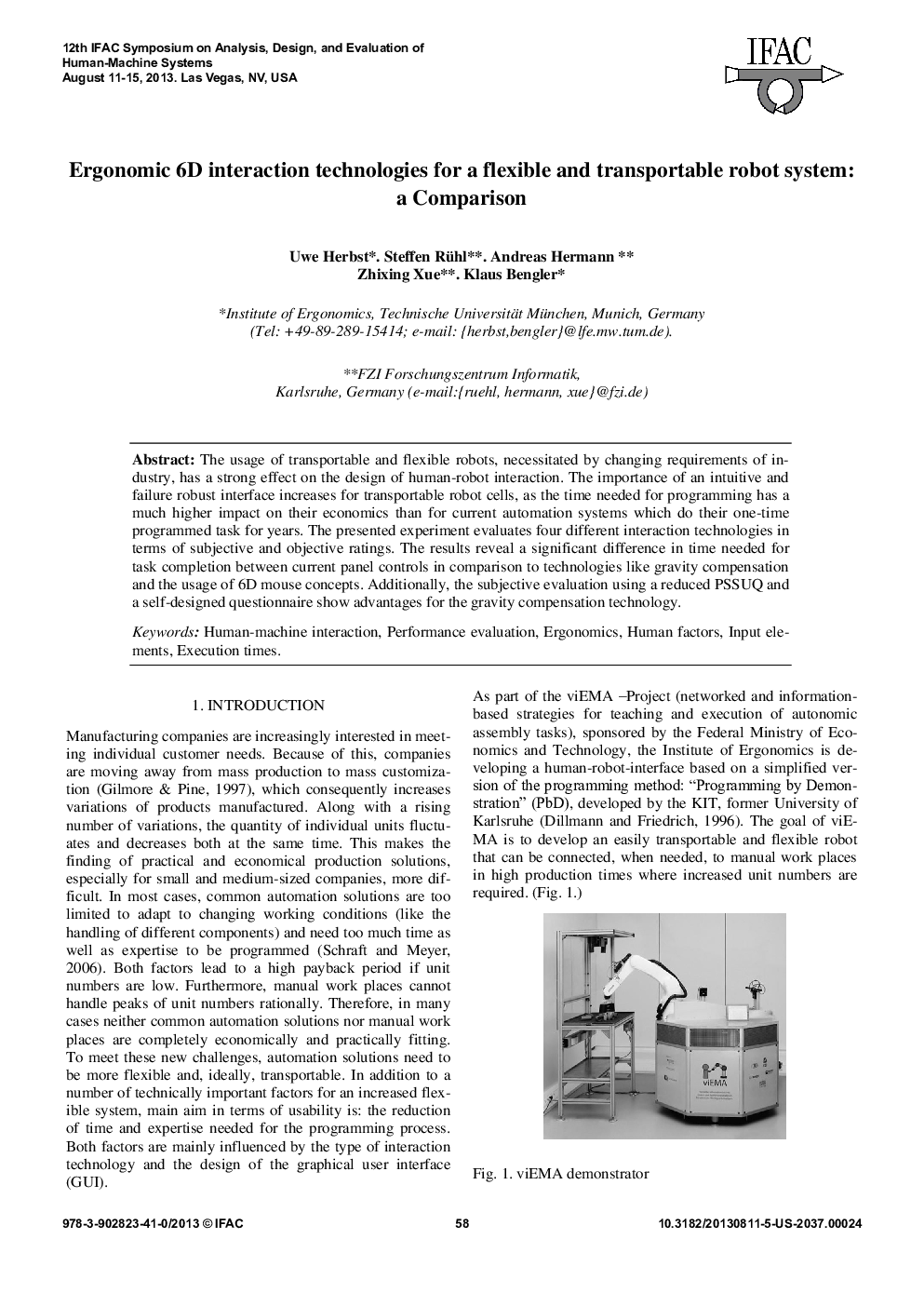| Article ID | Journal | Published Year | Pages | File Type |
|---|---|---|---|---|
| 716229 | IFAC Proceedings Volumes | 2013 | 6 Pages |
The usage of transportable and flexible robots, necessitated by changing requirements of industry, has a strong effect on the design of human-robot interaction. The importance of an intuitive and failure robust interface increases for transportable robot cells, as the time needed for programming has a much higher impact on their economics than for current automation systems which do their one-time programmed task for years. The presented experiment evaluates four different interaction technologies in terms of subjective and objective ratings. The results reveal a significant difference in time needed for task completion between current panel controls in comparison to technologies like gravity compensation and the usage of 6D mouse concepts. Additionally, the subjective evaluation using a reduced PSSUQ and a self-designed questionnaire show advantages for the gravity compensation technology.
